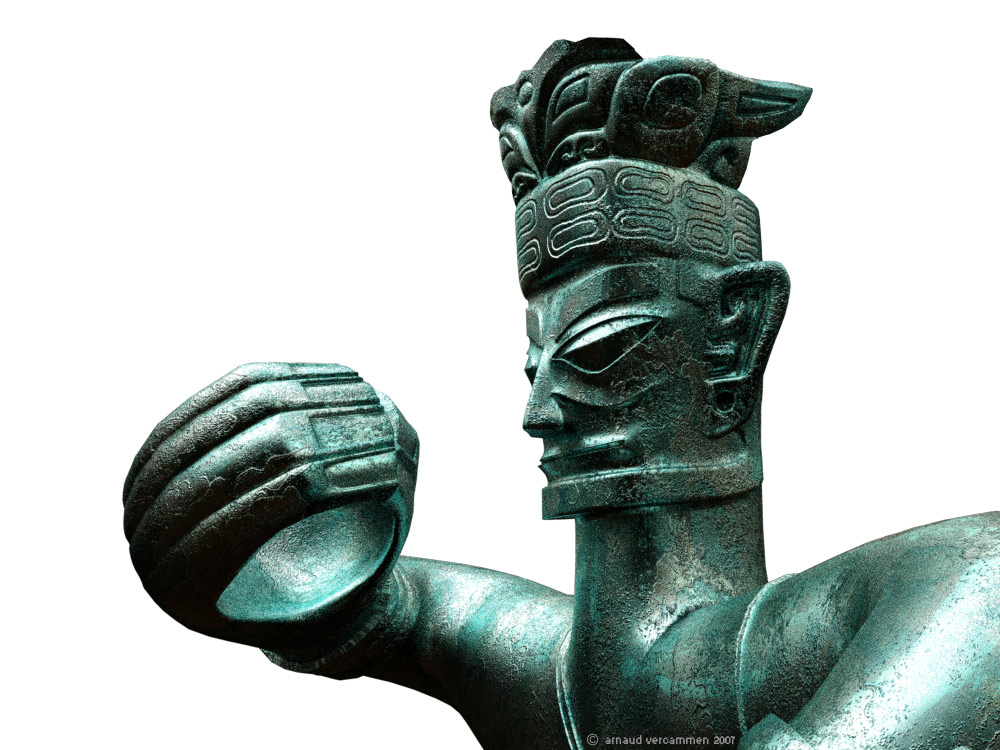 One of the more impressive displays at the Sanxingdui Museum, in Guanghan of South-west China's Sichuan Province, is a bronze statue of a barefoot man with anklets and clenched hands.
One of the more impressive displays at the Sanxingdui Museum, in Guanghan of South-west China's Sichuan Province, is a bronze statue of a barefoot man with anklets and clenched hands.
The 2.62 metre high, 180 kg statue is throught to represent a king of the Shu Kingdom. She was the name of Sichuan in ancient times.
Dating back 3100 years, the king's statue is crowned with a sun motiff and coated with three layers of tight, short sleeved bronze "clothing", which is decorated with a dragon pattern and overlaid with a checked ribbon.
Huang Nengfu, a professor of art and design at Tsinghua University and an eminent researcher in Chinese clothing from different dynasties, considers the garment to be the countriy's oldest existing dragon robe. He also thinks that the pattern is the work of the famous Shu embriodery.
The robe has changed the traditional view that Shu Embroidery began in the mid-Qing Dynasty(1644-1911). Instead it shows Shu Embroidery appeared in the Shang Dynasty (c.16th century - c.11th century BC), according to Wang Yuqing, a Taiwan-based Chinese clothing historian.
The bronze statue of the Shu king is one of the four most important cultural relics to be found in the Sanxingdui Ruins in Guanghan, a city 40 km from Chengdu. Sanxingdui, means "three star mounds" in English, is so named because the ruins are located in a village where there are three mounds.
Since 1992, more than 10,000 relics, dating between 5000 and 3000 years ago, have been unearthed in the city's Sanxingdui Ruins. The excavations have yielded some of the most significant Chinese archaeological discoveries of the 20th century.
Sunday, November 11, 2007
The mysteries of ancient Sanxingdui I
so says.. miel at 11/11/2007 01:14:00 pm
tags: archaelogy, archaeology in china, china, china Archaeology, sanxingdui, sichuan, 三星堆, 四川, 考古, 考古中国
Subscribe to:
Post Comments (Atom)






No comments:
Post a Comment